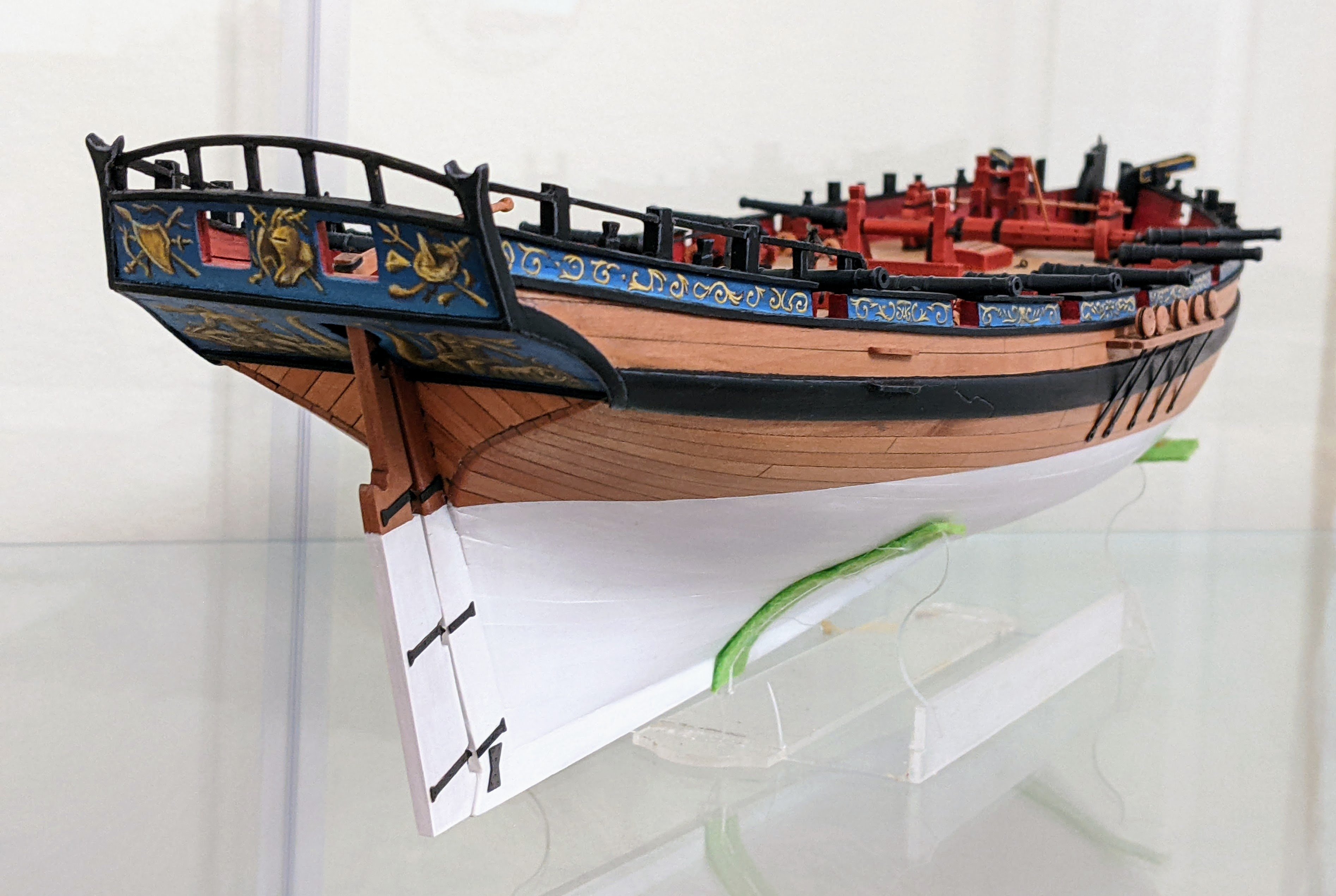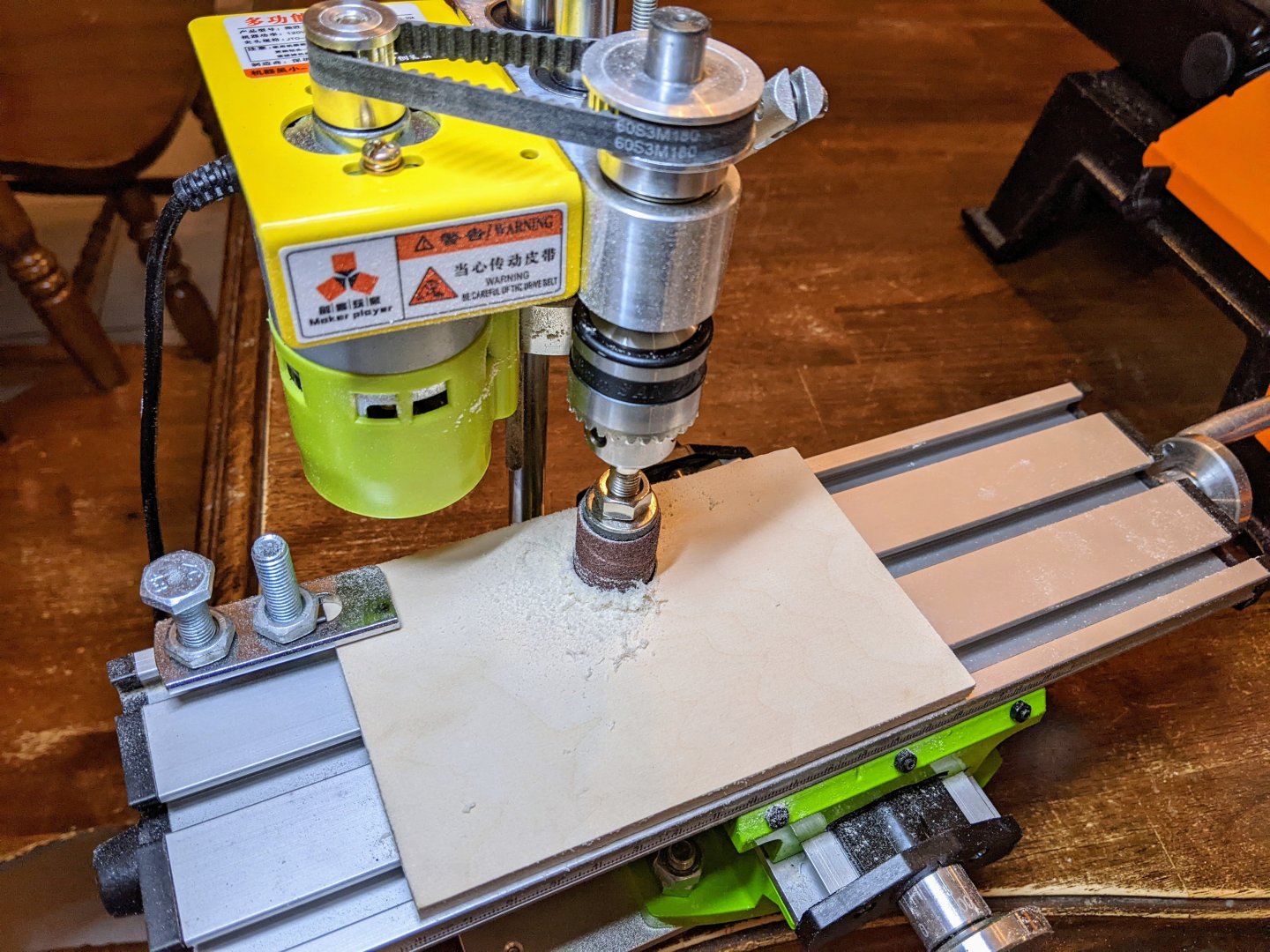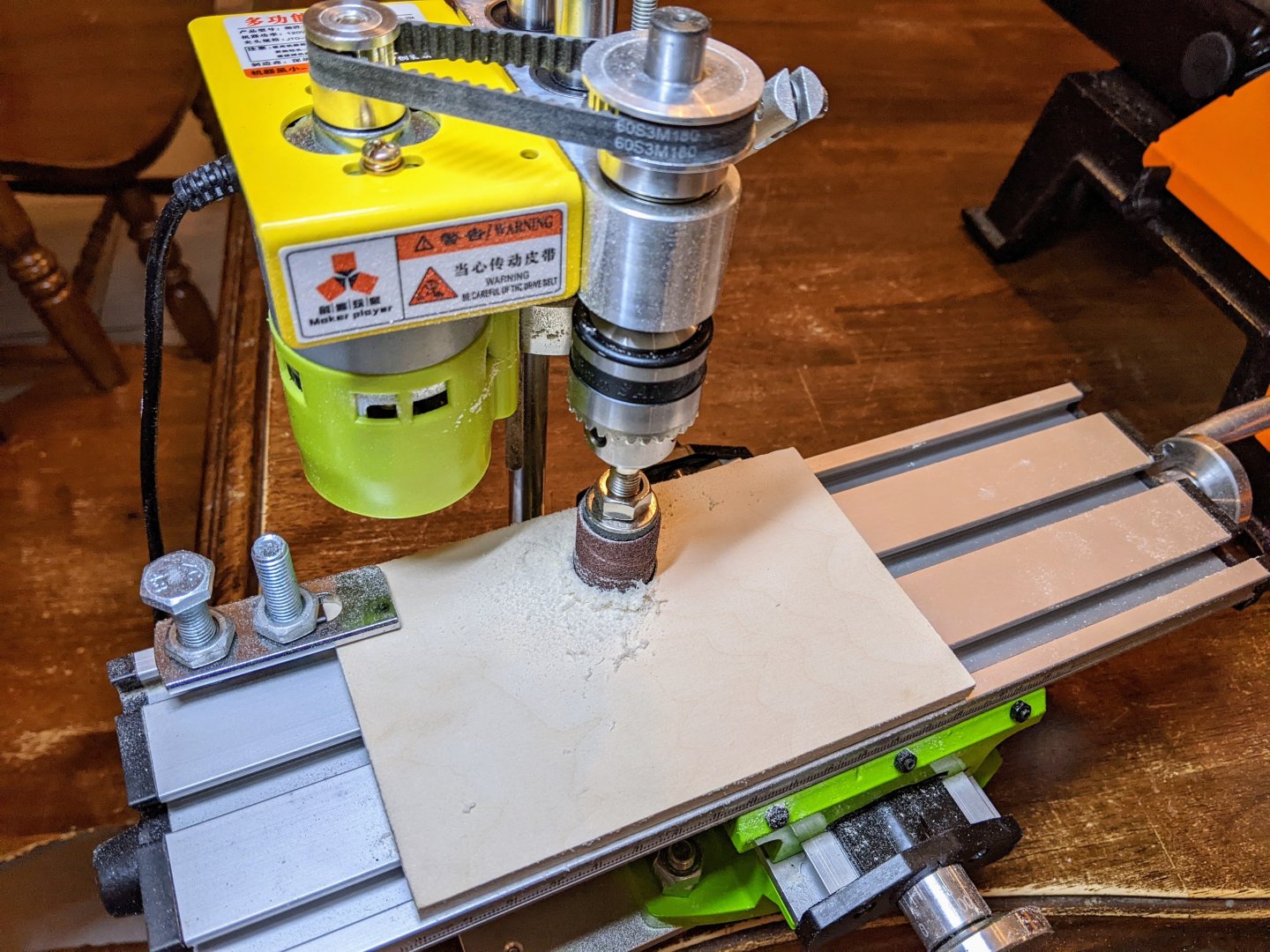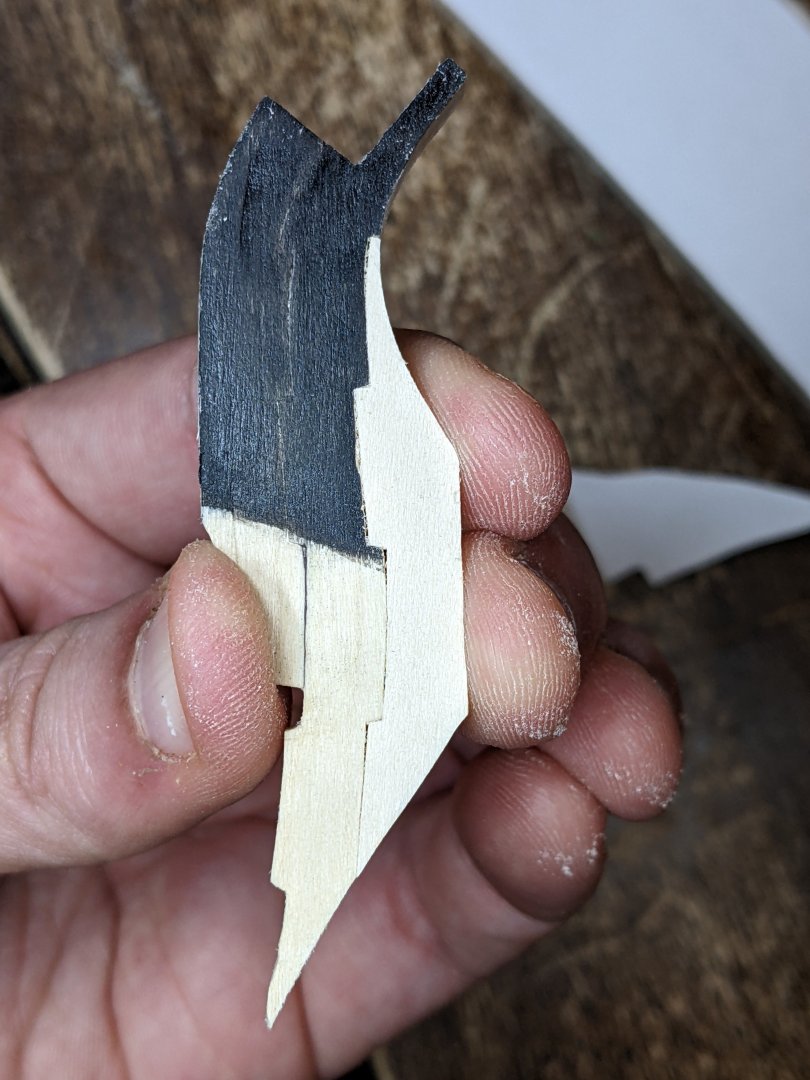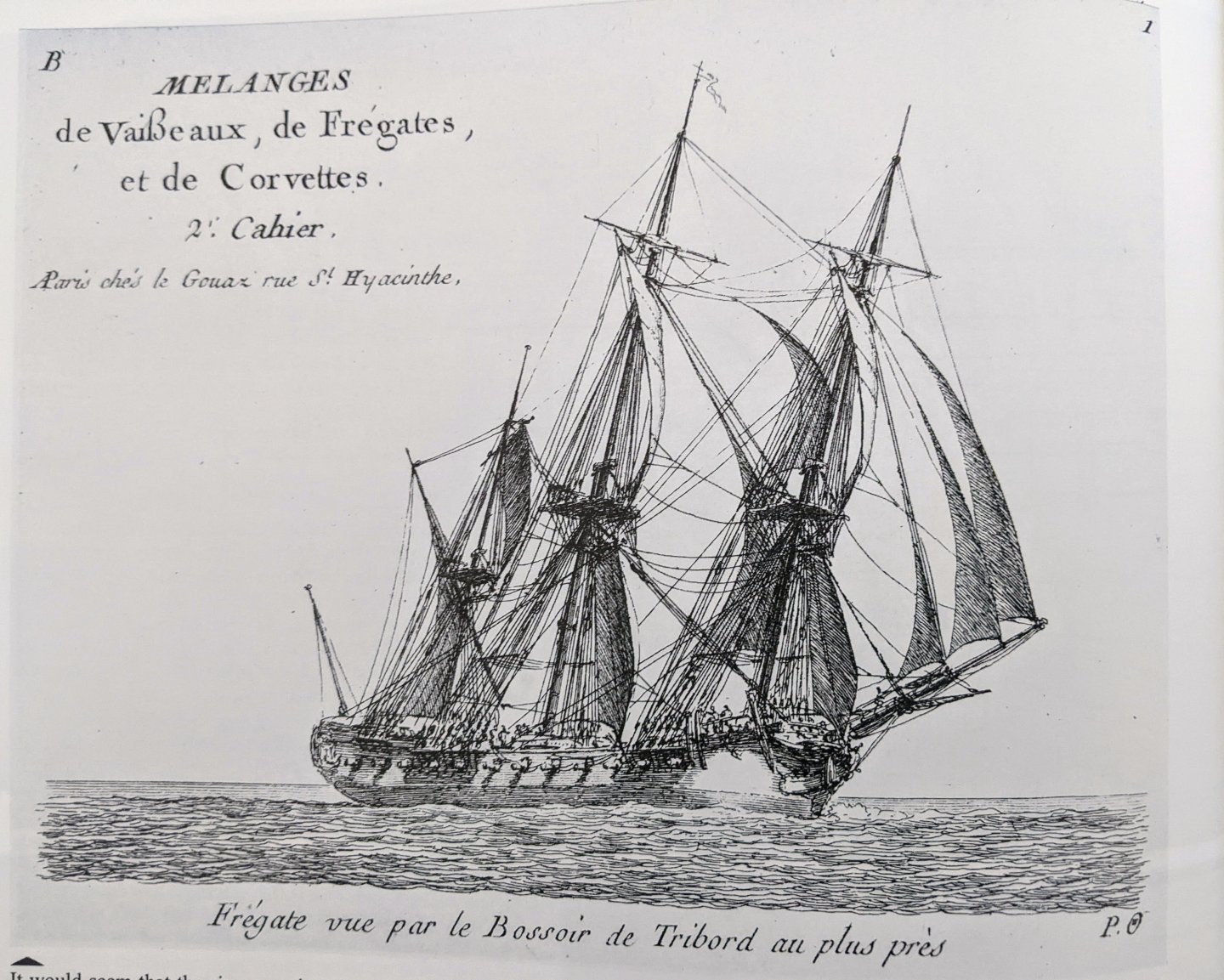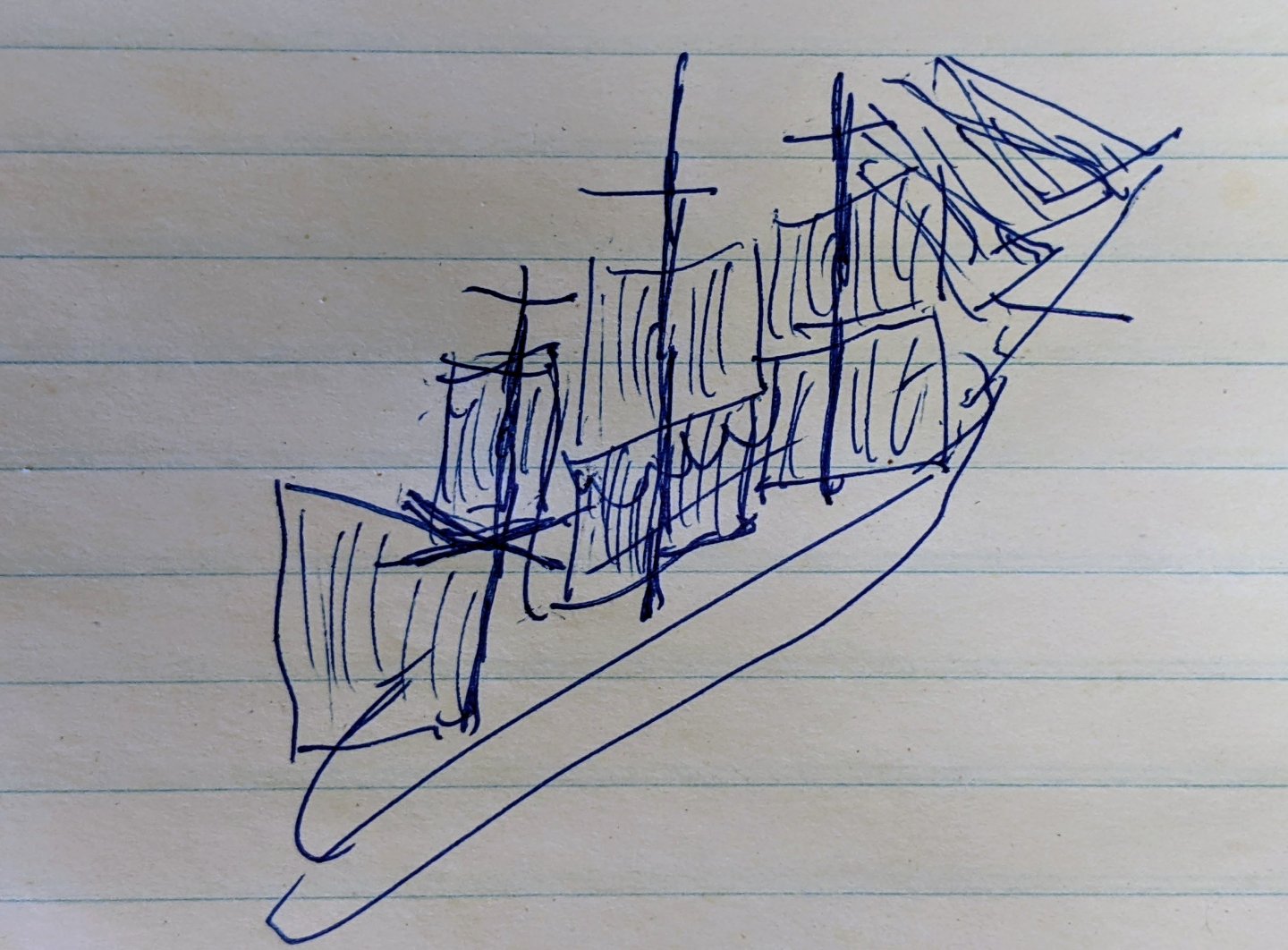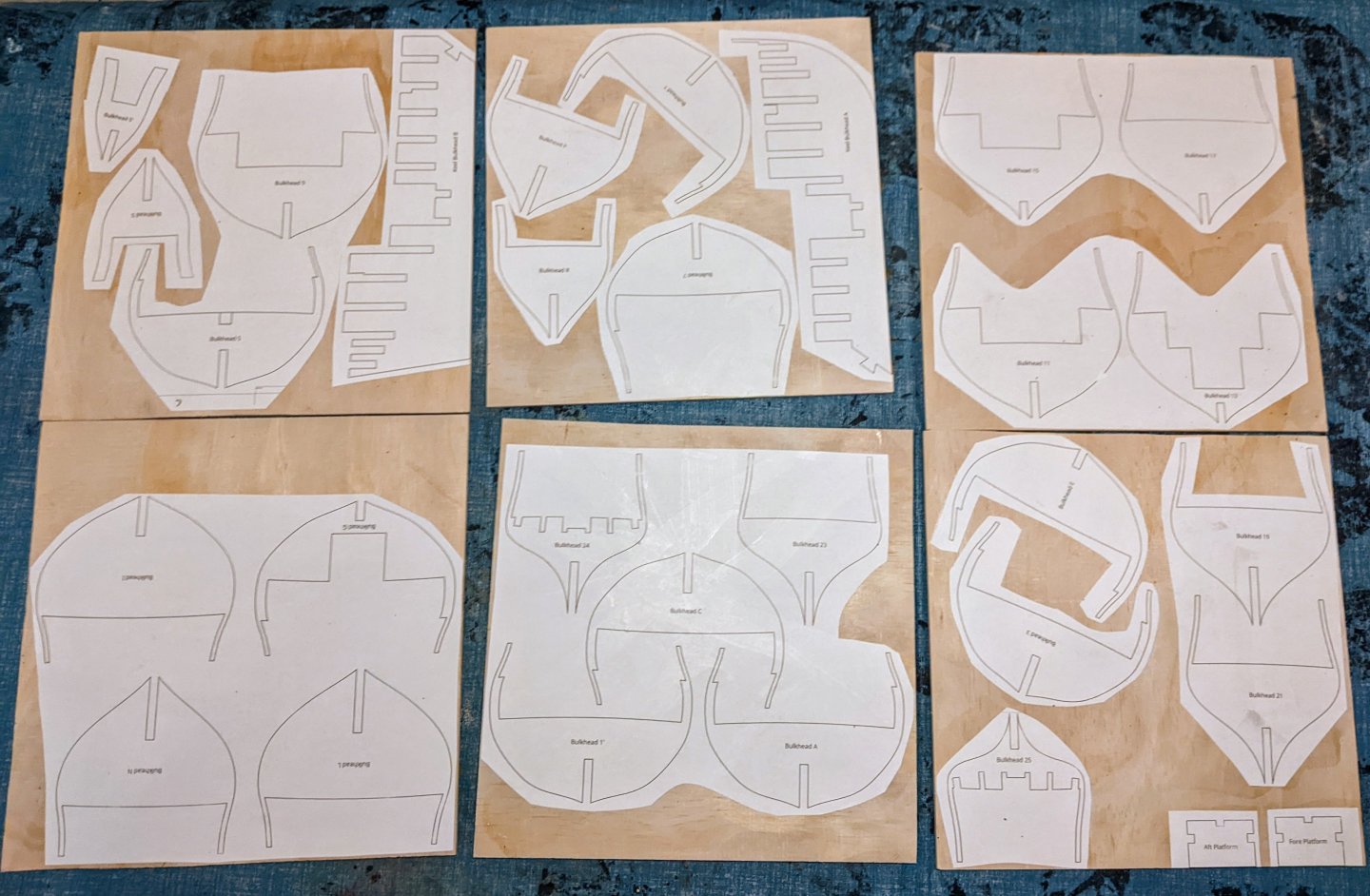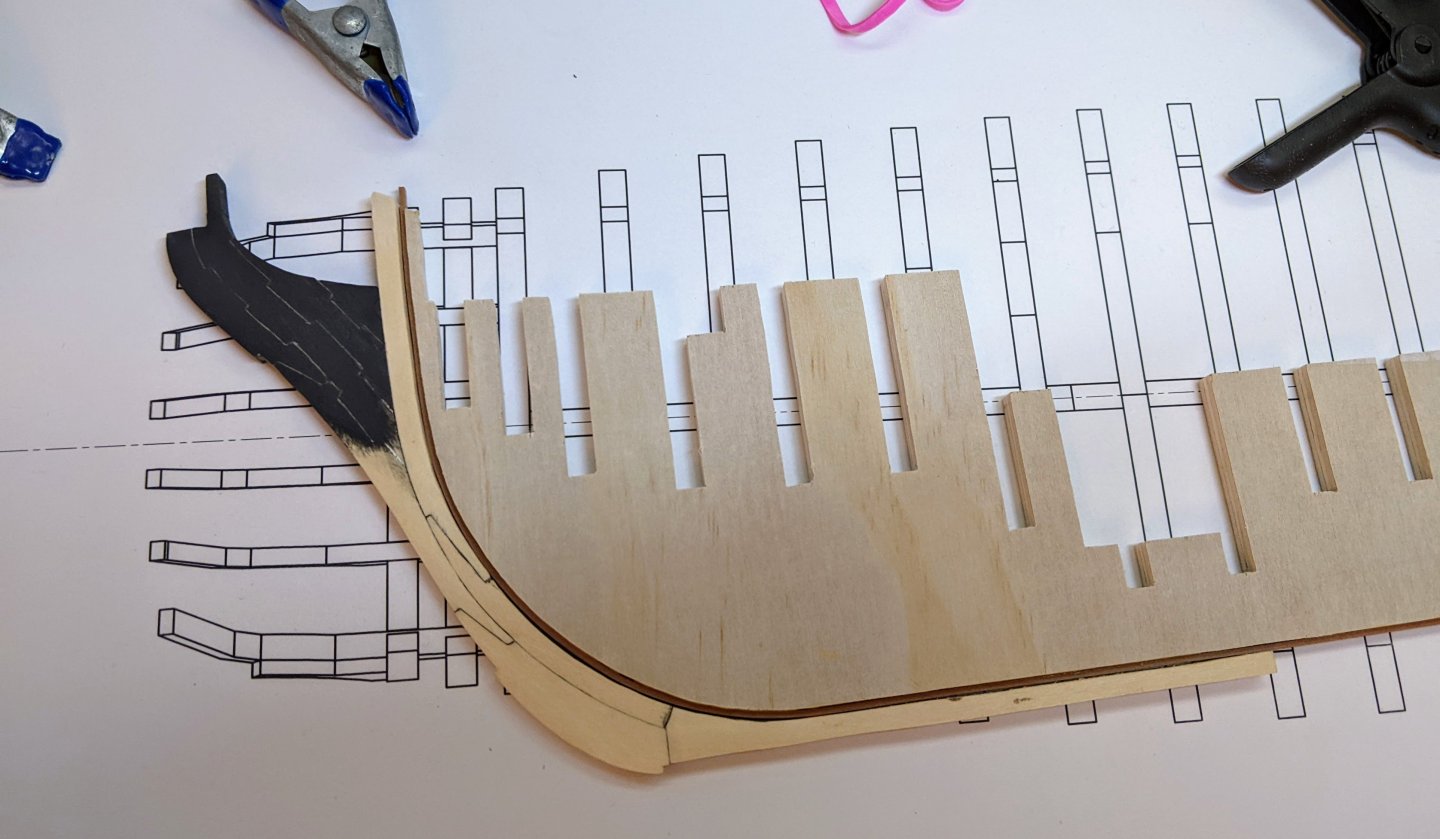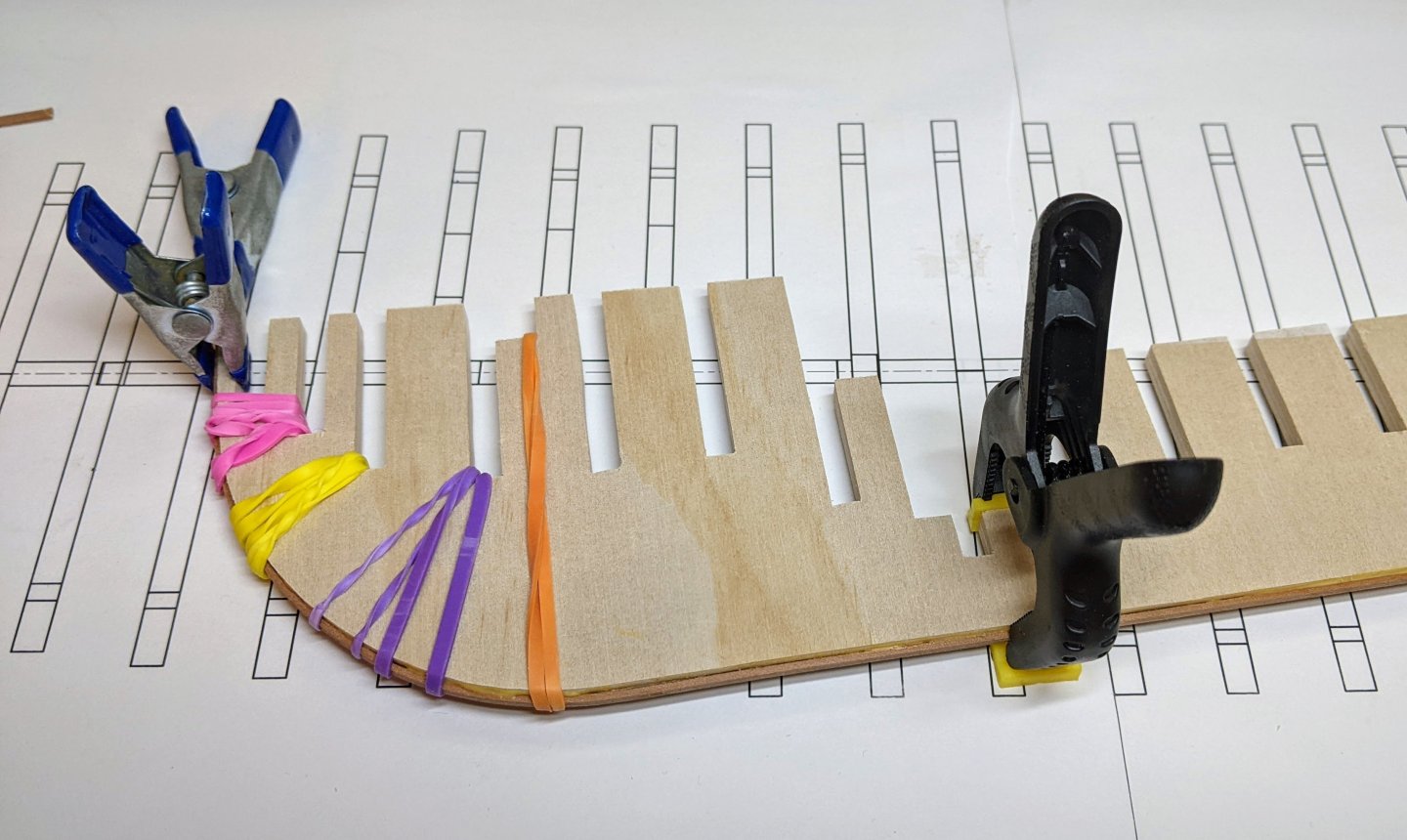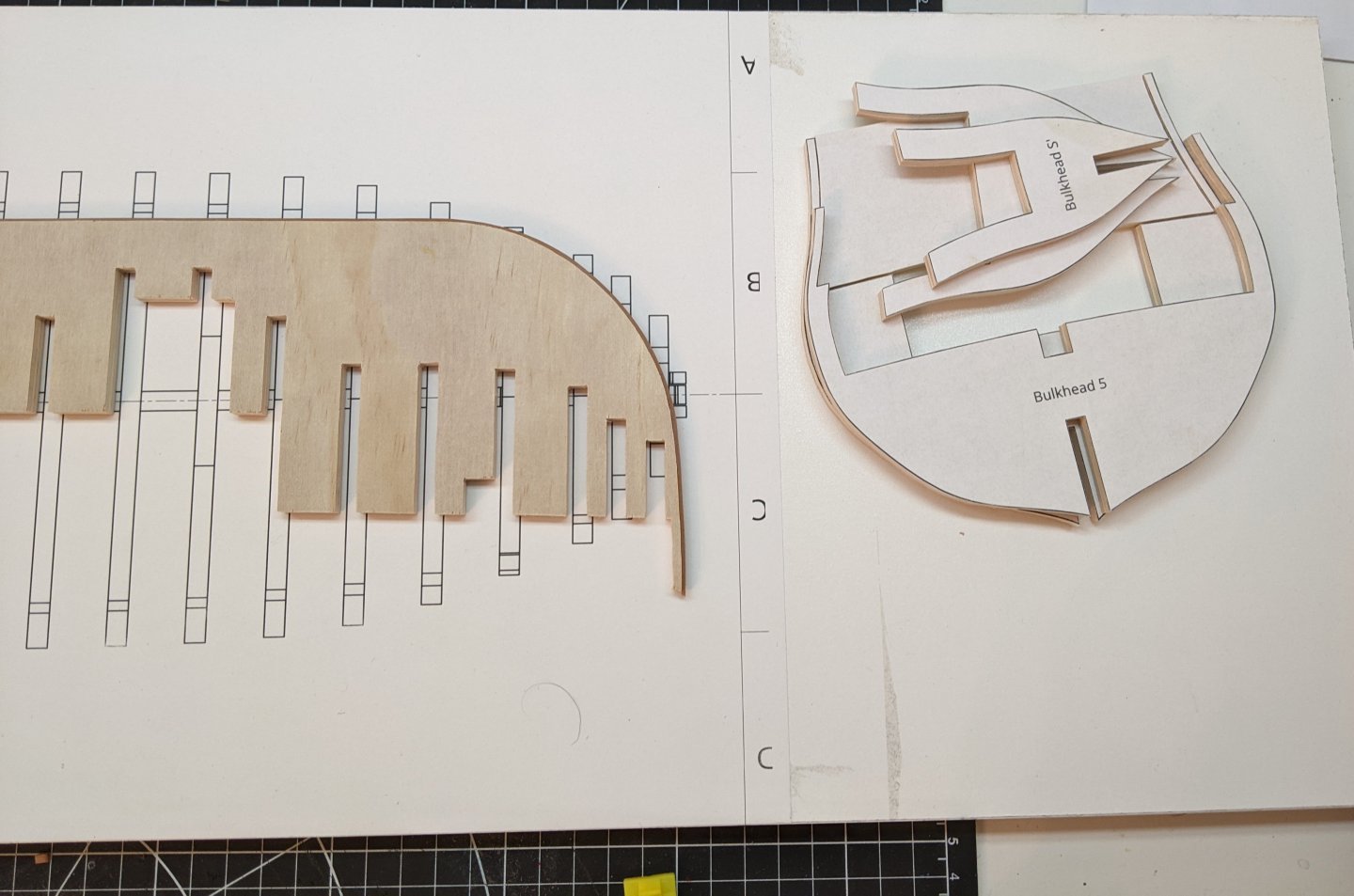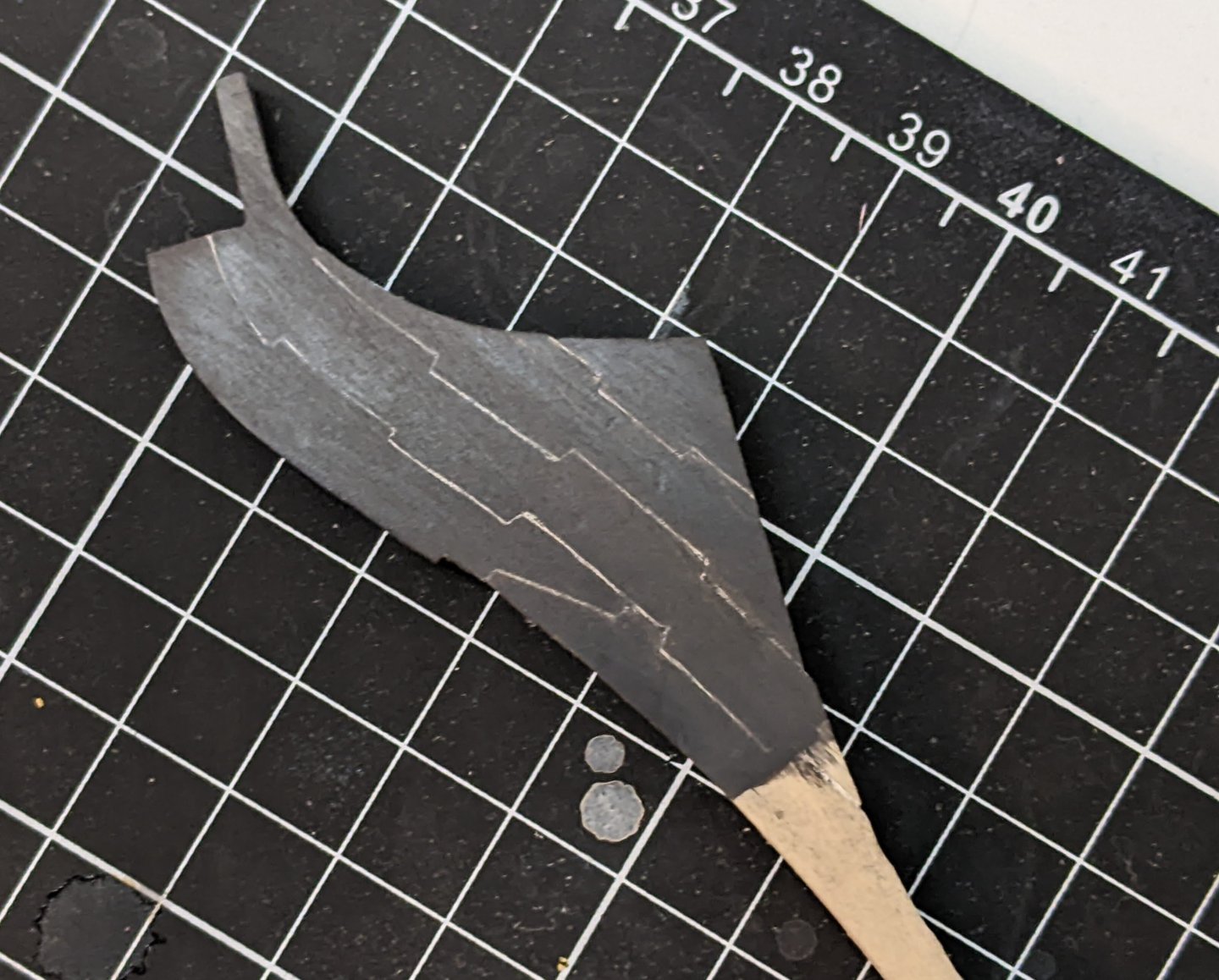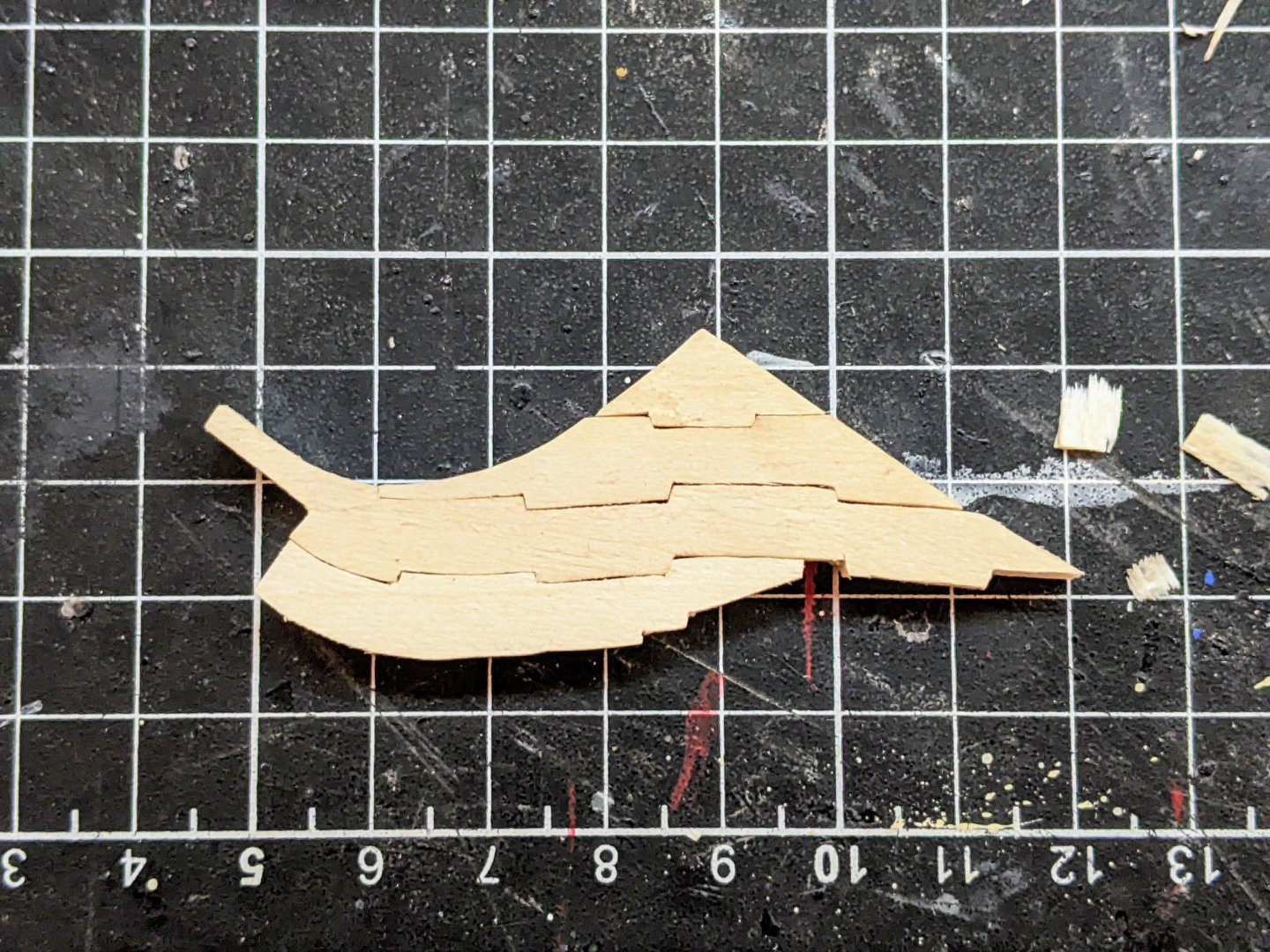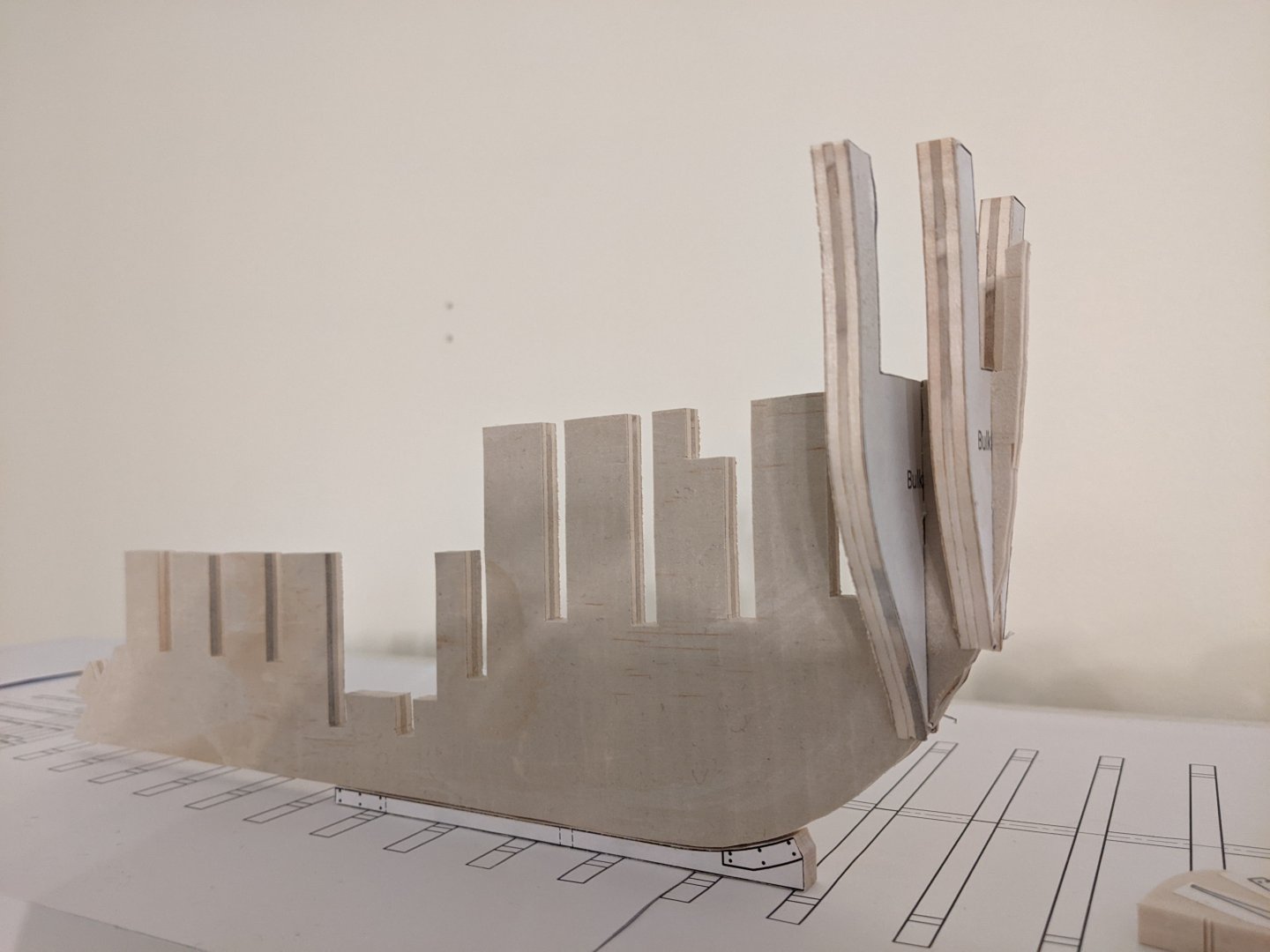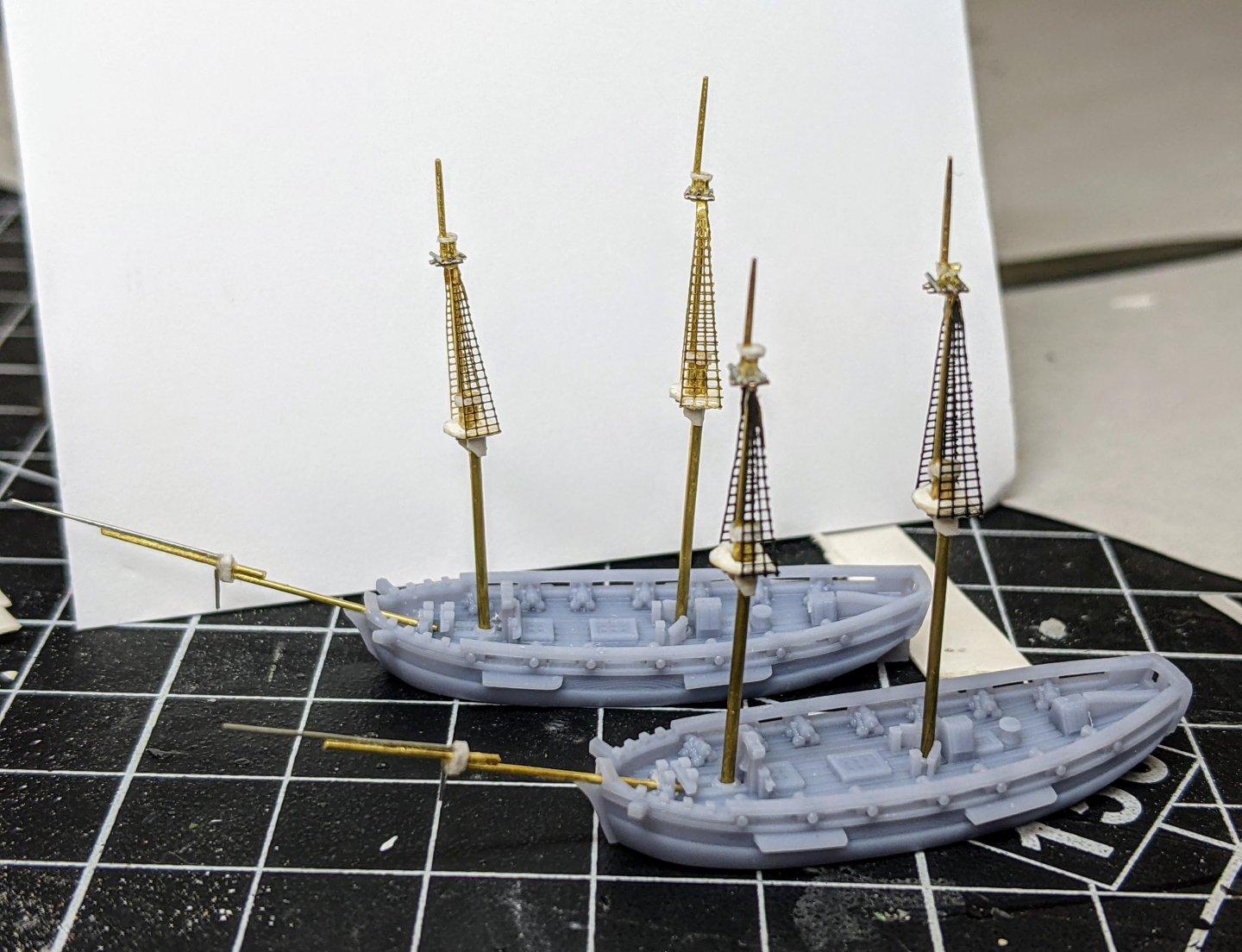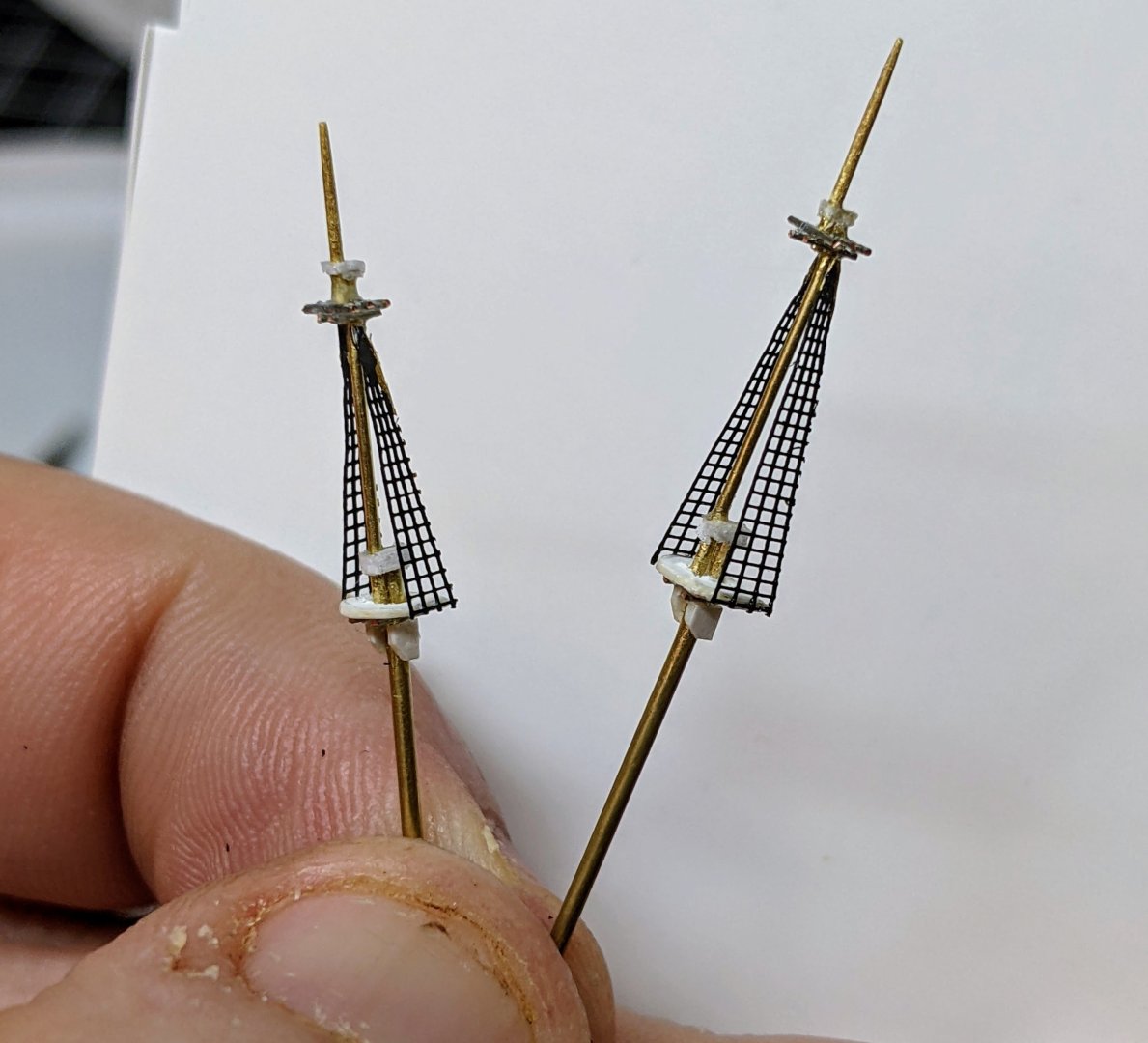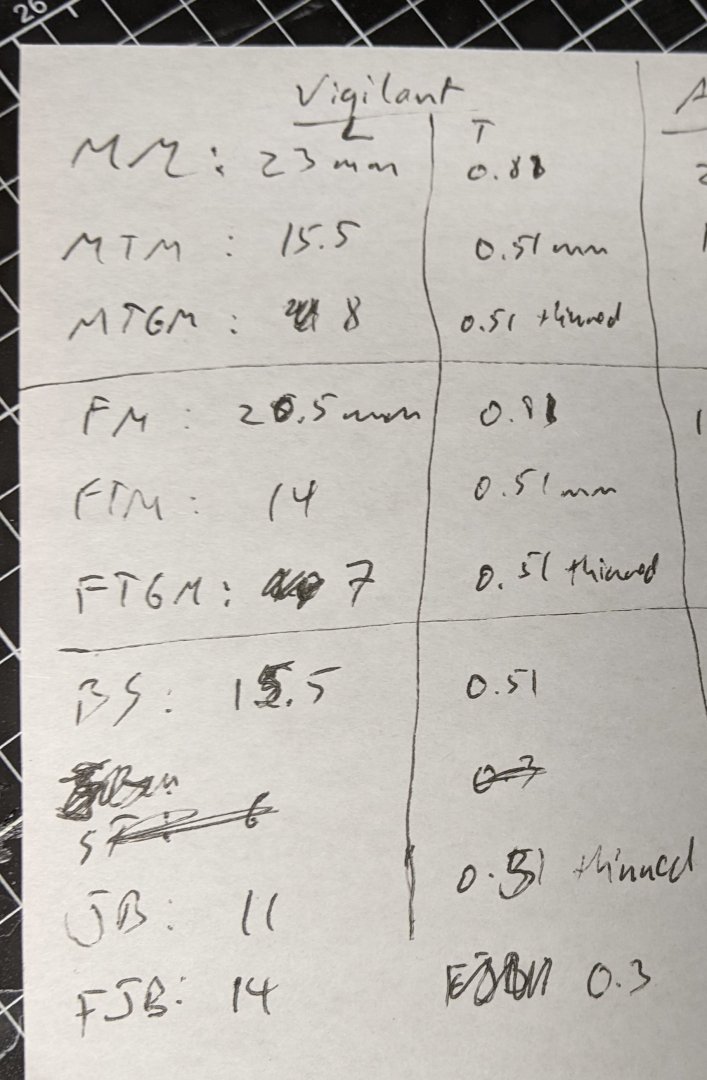-
Posts
1,324 -
Joined
-
Last visited
Content Type
Profiles
Forums
Gallery
Events
Everything posted by Thukydides
-
I have never used MM acrylic, but I have used many other brands. There is no need for a special thinner, just use water. Now if you are watering it down really far so it is more of a glaze, then sometimes you need to add in some glazing medium or similar. In most cases I just put the paint on my wet pallet and then press into the pallet until the paint is wet enough for me. In general the consistency you are looking for if just doing normal layering is such that when you paint a bit on your palm you can still see the lines. When thinning for use in an airbrush then yes I use a mix of isopropyl, water, flow aid and airbrush thinner, but that is because you are trying to avoid the paint drying in the airbrush and clogging it.
-
@TJM Thanks, they are kind of fun. However, I currently am not making much progress as I am exploring the possibility of making them even smaller :). The reason is I am not entirely happy with the black seas rules and how small the table feels. Age of sail should be mostly about the maneuvering before battle not the battle itself. So I have been exploring other rulesets and also doing some small tests trying to make up a ruleset of my own. As part of this I am experimenting with going down to 1/1200 scale. I am waiting on my friend to print me off some test versions of the brigs to see how viable it is to model them at that scale. Obviously there will be less detail, no crew etc, but the question I have is can I make them look good enough that I am happy with them. We will see how it turns out and I will document my tests here. The tricky part will be getting enough rigging in place and having enough differentiation in mast / yard thicknesses. One question is how to do the shrouds, I was thinking that I might try using actual thread as at that scale the ratlines would probably not be visible in real life anyways. The advantage of this would be I have a lot more control over the position of the shrouds. Going smaller sometimes makes some things easier as people can't actually see the things you left out. @Toolmaker You are correct, it did occur to me that this was probably the best solution but that would require me to have soldering tools which are an expense I can't justify at this point. In the end I found a few things helped. I cut notches in both the yards and masts to help the glue grab. After painting I did simulated slings with thread to hold them in place. These actually did a pretty good job. Finally, I found that the sails, once stiffened with mod podge (and super glue on the edges) and then varnished when in place actually made the whole thing pretty durable. In addition like on an actual ship, once the rigging is in place it helps balance everything. In the end the final products were very durable. I could probably drop them on the floor and they would be fine (not that I tried). They certainly were strong enough to take some rough handling.
- 36 replies
-
- Black Seas
- wargaming
-
(and 1 more)
Tagged with:
-
It is more as @AON said that carronades were not considered guns. I ship had a rating corresponding to the number of long guns it was armed with, there are examples of ships being given extra long guns on the quarterdeck and then being rerated from a 20 gun ship to a 24 gun ship. Carronades were not included in this number except in a few unique cases (such as the Rainbow) where the carronades replaced the entire armament. @AON covered the history very well. The only thing I would add is that there are 1782 and 1793 lists that respectively list the actual carronade armament of ships in the RN at the time. However that is well before the time period of the battle of the Nile. I do have a list from 1802 which suggests the official armament for 74s was 2 32 pdr caronades and 6 18 pdr ones, but it doesn't indicate where on the ship they were. Proportion of Carronade Stores Selected Entries Source: TNA ADM 160/150 Date: Circa 1802 A proportion of carronades and stores for a ship of each class in the Royal Navy 100 90 80 74 64 50 44 38 36 32 28 24 20 Sloops Brigs Cutters Carronades 68pdr 42 32 2 2 2 2 8 8 24 6 2 6 6 6 18 6 6 6 6 8 8 12 6 8 8 6 4 Elevation Screws 32pdr 2 2 2 2 8 8 24 6 6 6 6 2 6 6 6 18 6 6 6 6 8 8 12 6 8 8 6 4 Traversing Bars 8 8 8 8 8 12 8 8 8 6 6 8 8 8 6 4 Breechings 7in 4 4 6½ 12 5½ 12 Tackles Complete 2½in 6 6 2 18 1½ 18
-
Welcome to MSW
-

FaceBook miniature tools ads
Thukydides replied to jmlyle's topic in Modeling tools and Workshop Equipment
You were the inspiration for my setup 😄. -

FaceBook miniature tools ads
Thukydides replied to jmlyle's topic in Modeling tools and Workshop Equipment
I have a version of that drill press which I got from Amazon. It looks a little different, but many of the parts used to make it are the same. So far it has worked great for me. The only issue I had was the height was insufficient to fit a mini x-y table under it, but that was easily rectified by buying a slightly longer stainless steel rod. -
Thank you to everyone for all the encouragement. I figured I would give a small update as work continues in the background with more test pieces. I am starting to get better with the scroll saw so only minor cleaning up with the drum sander is now necessary. I also continue to do more test joint for the knee of the head. With the below example I think I am finally starting to get close to a satisfactory result. This is test article #5 and hopefully the next knee of the head I show you will be the final thing. You can see I also have been experimenting with managing the transition from painted area to unpainted area. The painted areas need white joints to shine through the black paint, but the unpainted areas need the dark brown joints to simulate the caulking. I have 14/28 bulkhead pieces done so we are at the half way point with the internal structure cutting.
-
Good job and good luck. You have made a good start. It is hard tell from the pictures, but it looks to me like you didn’t edge bend the planks enough at the bow. That is why they are twisting out from the bulkhead (or maybe the faring was not enough). This is not a big deal as you can sand it all down and use filler where necessary, but it is something to watch for the second layer where people will actually see it. The planks should lay against the hull with minimal to no pressure. If you are having to force them in place you have not edge bent them enough.
- 38 replies
-
- Alert
- Vanguard Models
-
(and 1 more)
Tagged with:
-
Amazying! You are quite the artist. Not an expert by any means, but given the way you have her leaning larboard and the way the waves are formed I picture her with the wind on her beam or maybe close reached. Given the windy conditions I would suspect the topgallants would be lowered. I would imagine something like the below image. Note the sails are all turned at least 45 degrees to the larboard side. I included a jib and flying jib and foresail. Depending on the amount of wind and stormy conditions you may want to lower sails and potentially strike masts. There is a really cool contemporary diagram of a french frigate showing various points of sail that is reproduced in 'The history of the french frigate'. I can take a picture when I get home of the most relevant point of sail. Also a really minor point, but I feel she should be sitting a little lower in the water.
-
It is looking really good. I really like the weathered look you have gone for. It suits the subject. On dry brushing, the key thing is to get almost all of the paint off of the brush (I find dollar store makeup brushes work super well). Also it works best when there is lots of 3d detail. If you try to drybrush on a flat surface you just end up with a streaky look. You can also do the drybrushing in stages where you use a darker colour and heavily drybrush followed by a lighter colour with a light drybrush to just pick up the very edges.
- 312 replies
-
- Chile
- Latin America
-
(and 6 more)
Tagged with:
-
Log #15: Construction Begins I have finally reached the stage where I am comfortable enough with the scroll saw to start construction. I have found that I am now precise enough with it that I can do a straight line or slight curve right on the line, but I still struggle a bit with sharper curves (e.g. the hull lines). However, I found that I do have enough control to make sure that any errors are biased to one side so following @AON's advice I am erring on cutting outside the line and then using a drum sanding setup I attached to my mini drill press to fix any inaccuracies. First step was to glue all the templates for the bulkheads to the plywood. For this I used rubber cement. The bulkheads with longer, fragile frames were positioned such that I will be able to retain the piece in the middle of them to use as a support. Once the center two pieces were cut out I glued them together and left them pressed between weights for a few days. I then glued on a strip which will serve as the rabbet. My method of construction is certainly not original and I am broadly following the Winchelsea instructions for the underlying structural design. I have also been doing more test work on my stem. You can see my fully constructed experiment here in place against the center bulkhead. Much like the upper parts of the knee of the head, I have been experimenting with using brown ink (as opposed to the white) to colour the glue. It seemed to mostly work well with two key caviats: My joints were still not good enough I need to seal end grain before gluing the joints as sometimes the colour bleeds up through it I am going to do at least one more test head assembly using my scrap wood to see if my ideas for correcting the issues experienced in this version work. I still have many more bulkheads to cut out, but it is good to be able to say that work on the actual project has finally begun. You can see in the below picture how (as previously mentioned) the offcut from between the frames on the bottom bulkhead has been cut out, but then left in place to help protect the frames from damage.
-
Another minor update as I actually have some progress to report (or at least in this case a relatively successful test). On the scroll saw front I am getting more comfortable, and about half the time I get my cuts right on the line, but then all of a suddent I find myself wandering. In particular, certain types of curves I always seem to wander first to one side and then the other. I have assembled my first completed iteration of the knee of the head and painted it. I discovered that to some degree firm clamping as you are assembling can mitigate some of my failures on the cutting of the joints. Also as a proof of concept my attempt to try and show the joints through black seems to have worked. I am not entirely happy with the effect, but for a first go I am pretty pleased. I mixed the glue used in the joints with white ink so that when I painted over with thin layers of black, the lighter colour shon through. The effect I am aiming for is more the upper joints (the thin harder to see ones) than the lower joints, but that will be fixed by making sure my joints are tighter. Note I did not bother with the cutwater and the waterline is only the approximate location. This was just a proof of concept test. Now to see if I can do another one, this time with tighter joints.
-
Time for a minor update as it has been quite a while since I last posted on Perseus. Work has been busy so modelling time has been limited and I have been lately distracted by another project. Despite this, work has continued in the background. However I have very little to show for it as the work has mostly focused on practicing future cuts on scrap wood. I have been using the more warped pieces of plywood I have (not suitable for the main build) as tests to practice cutting out the bulkheads on the scroll saw. I have also been cutting out test keel pieces from basswood I got at my local hardware store. While this has been going on I have also been experimenting with trying to cut tight joints for knee of the head. My second test version is much better than my first, but I am still having trouble getting all the joints really tight. Any suggestions anyone has would be much appreciated. I plan to keep practicing with the basswood until I am happy with my results and then I will shift over to attempting the final version with my pearwood.
-
1/700 Vigilant Class Brigs - Masts I have begun work on two French Vigilant class brigs. The hulls are again from Turner Miniatures. To make the masts, I used the ratios from Lees. The lower masts need to be adjusted a bit to account for the fact that they will not extend below the waterline. You can see my calculations for the dimensions at scale below: As far as thicknesses go, some accommodations need to be made for the difficulties of working at this scale. The main requirement is that masts and yards need to look distinct even if the exact proportions are not perfect. I tried a number of different materials for the fighting tops, but in the end found that card was the easiest and once it was covered in super glue it was durable. Paper was again used to simulate the caps for the masts. I have attached the upper shrouds, but the lower ones will have to wait until painting is done. And here you can see the models with the masts temporarily put in place. Next up I need to start work on the yards.
- 36 replies
-
- Black Seas
- wargaming
-
(and 1 more)
Tagged with:
-
With brass I have found you need to: Make sure you get all the chemicals from the etching process off of it by cleaning well with acetone rough up the surface a bit to improve adhesion Use a primer (ideally sprayed) Once the painting is done seal it with some sort of varnish If you do all of those things then it seems to turn out relatively durable. Many of the same steps need to be done to stop the blackening from coming off if you go that route. But all of that is a real pain. What I have discovered is in many cases if what you are doing is purely decorative then you can get away with using paper which is painted and sealed with varnish. So eyebolts and the like I used blackening, but any metal banding (such as on the anchors) I just used paper. I also like the rudder with the piece on the end of it :). Looking good.
- 312 replies
-
- Chile
- Latin America
-
(and 6 more)
Tagged with:
-
Great job. That is a major milestone.
- 301 replies
-
- Constitution
- Bluejacket Shipcrafters
-
(and 1 more)
Tagged with:
-
The 1.5 and 1 inch dimensions are circumferences. Now that is for the swan class sloops. I took a quick look at the steel tables for 20 gun ships and they say pretty much the same, 1.5 in for the main and for mast lower ratlings and 1 in for the topmast shrouds and for the mizzen. This works out to 0.18mm and 0.13mm diameter respectively at 1/64. Edit: Nvmd on the explanation, I just realized I misread your comment. Yes likely a typo. In my head I just read the 0.01mm as 0.1mm. In terms of the colour there is historical precedent for the ratlins being tared and also for them to use natural rope. It depended on the preference of the commander. Personally I prefer the dark look in which case you would just use the same colour as you used for the shrouds. However, it is up to you.
- 422 replies
-
- Vanguard Models
- Sphinx
-
(and 1 more)
Tagged with:
About us
Modelshipworld - Advancing Ship Modeling through Research
SSL Secured
Your security is important for us so this Website is SSL-Secured
NRG Mailing Address
Nautical Research Guild
237 South Lincoln Street
Westmont IL, 60559-1917
Model Ship World ® and the MSW logo are Registered Trademarks, and belong to the Nautical Research Guild (United States Patent and Trademark Office: No. 6,929,264 & No. 6,929,274, registered Dec. 20, 2022)
Helpful Links
About the NRG
If you enjoy building ship models that are historically accurate as well as beautiful, then The Nautical Research Guild (NRG) is just right for you.
The Guild is a non-profit educational organization whose mission is to “Advance Ship Modeling Through Research”. We provide support to our members in their efforts to raise the quality of their model ships.
The Nautical Research Guild has published our world-renowned quarterly magazine, The Nautical Research Journal, since 1955. The pages of the Journal are full of articles by accomplished ship modelers who show you how they create those exquisite details on their models, and by maritime historians who show you the correct details to build. The Journal is available in both print and digital editions. Go to the NRG web site (www.thenrg.org) to download a complimentary digital copy of the Journal. The NRG also publishes plan sets, books and compilations of back issues of the Journal and the former Ships in Scale and Model Ship Builder magazines.

